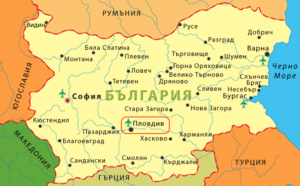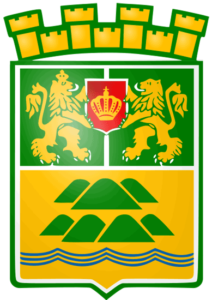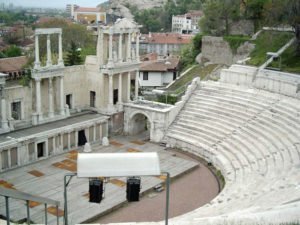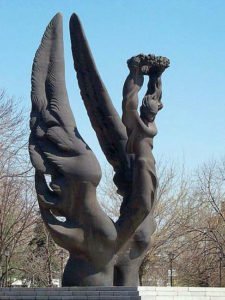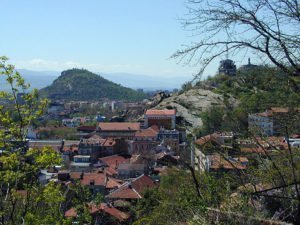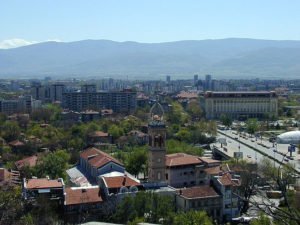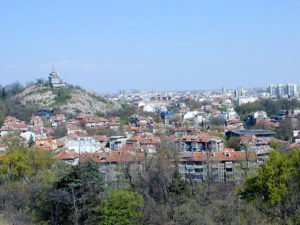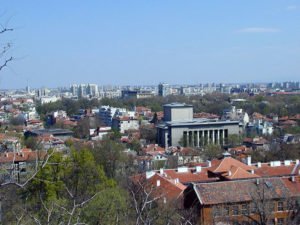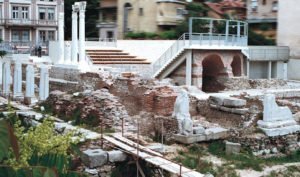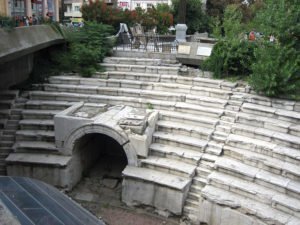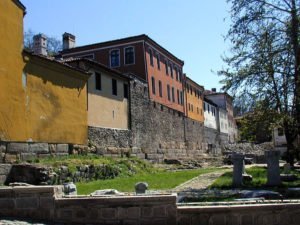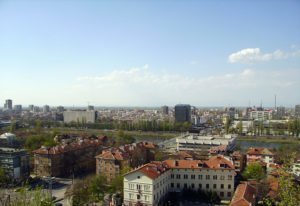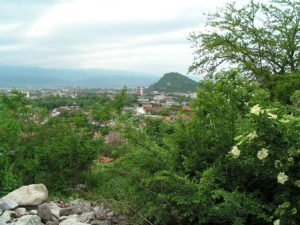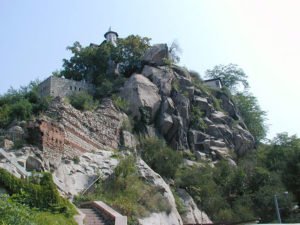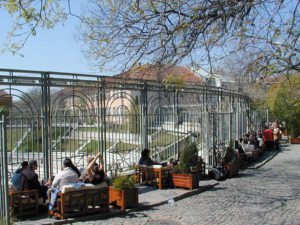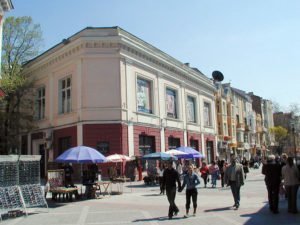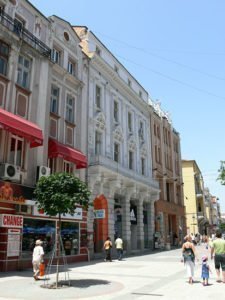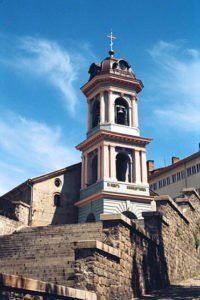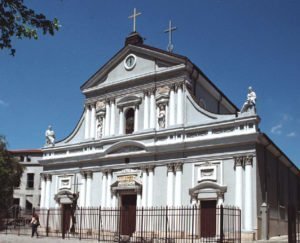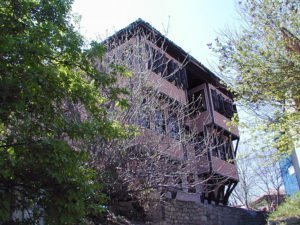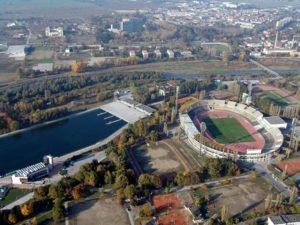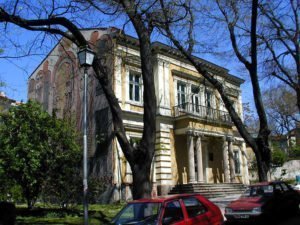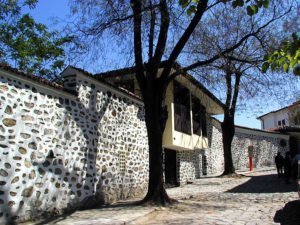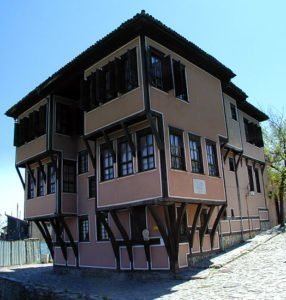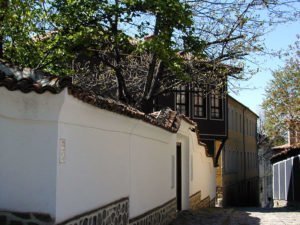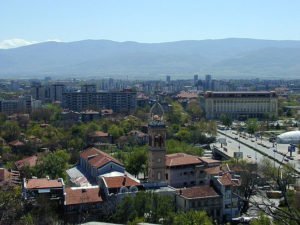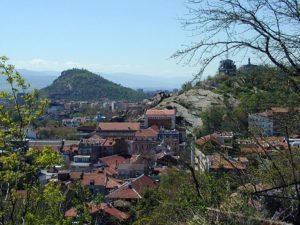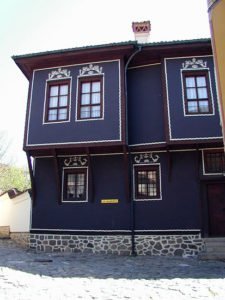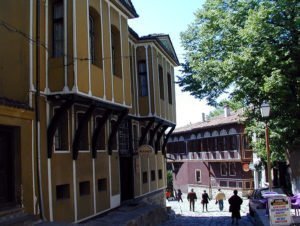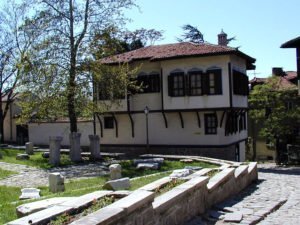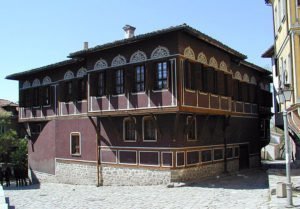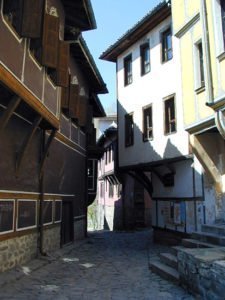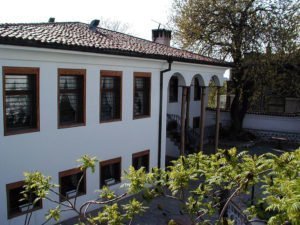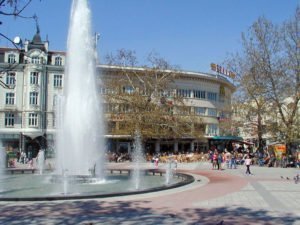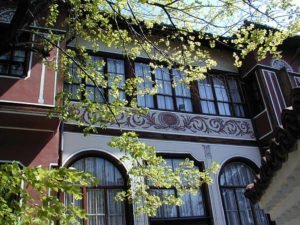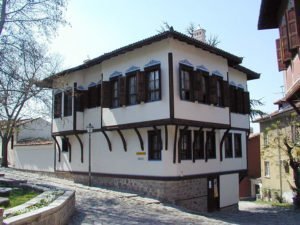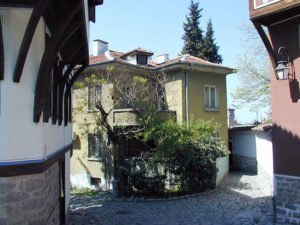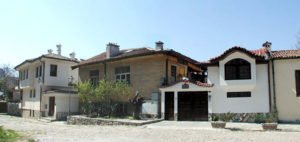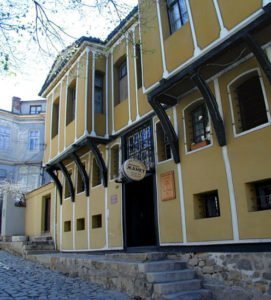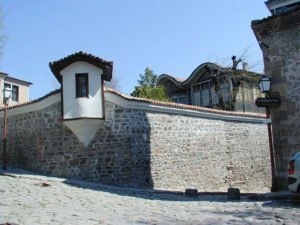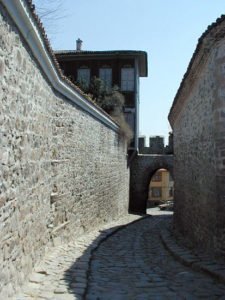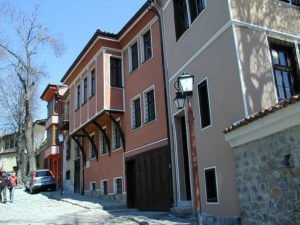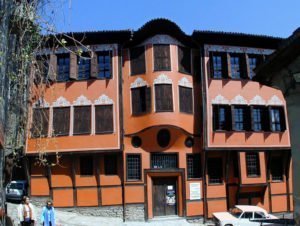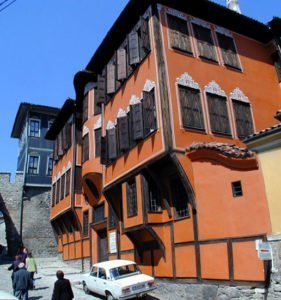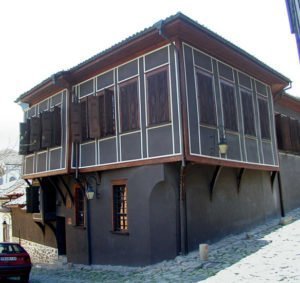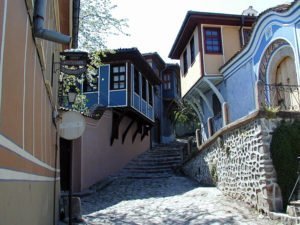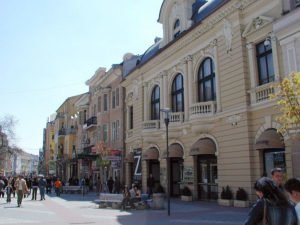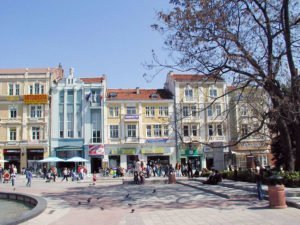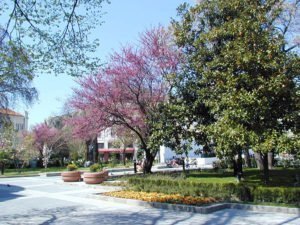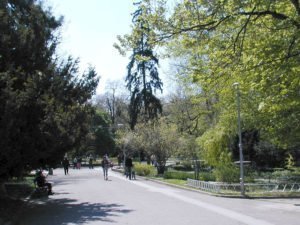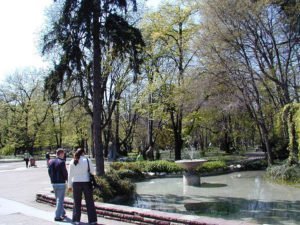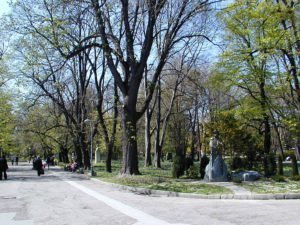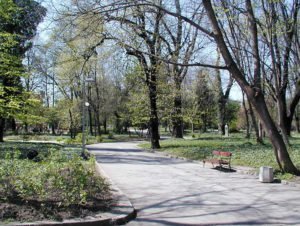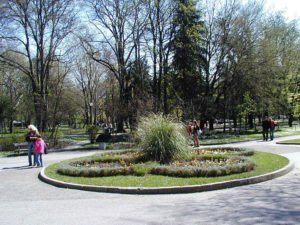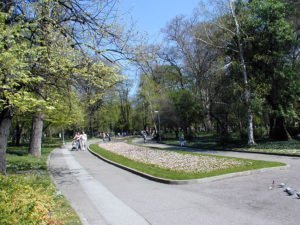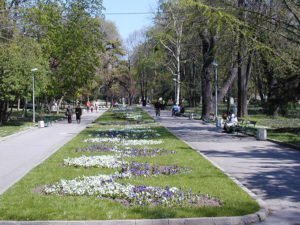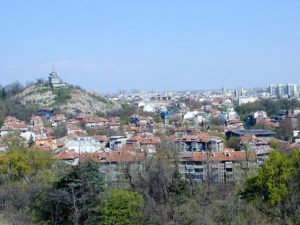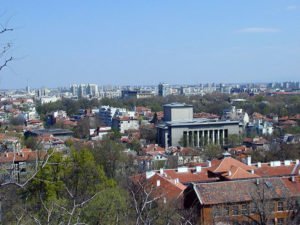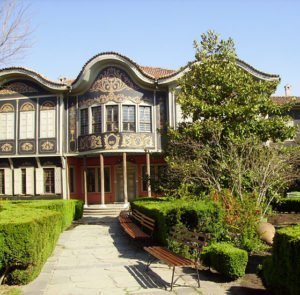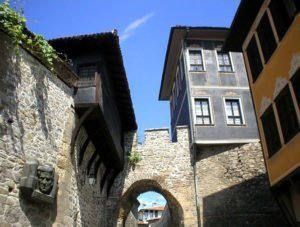About Plovdiv
Plovdiv is the second-largest city in Bulgaria after Sofia, with a population of 378,107.It is the administrative centre of Plovdiv Province in southern Bulgaria and three municipalities (Plovdiv, Maritsa and Rodopi), as well as the largest and most important city of the historical region of Upper (or Northern) Thrace, famous for its ancient and diverse culture and millennial history. The city is an important economic, transport, cultural and educational centre of the whole country.
Plovdiv is situated in the central part of the Upper Thracian Plain on the two banks of the Maritsa River. It is 10 km from the Rhodope mountains and 50 km from the Balkan mountains. The city is constructed on seven syenite hills, some of which are 250 m high. Because of these seven hills, Plovdiv is often referred to in Bulgaria as “The city of the seven hills”.
Plovdiv is host to many economic and cultural events such as the International Fair Plovdiv, the international theatrical festival “A scene on a crossroad”, the TV festival “The golden chest”, and others. There are many remains preserved from Antiquity such as the Ancient amphitheatre, Roman odeon, Roman Stadium, the archaeological complex Eirene and others. In the 12th century BC the settlement on one of the hills grew to the Thracian city of Eumolpias which was among the first cities in Europe.
Geography
Plovdiv is situated in the central parts of the Upper Thracian Plain. It is divided into two parts by Southern Bulgaria’s largest river Maritsa. Only one of the city’s six districts is located to the north of the river and the main part of the city lies to the south
The plain of Plovdiv is an alluvial plain formed by the Maritsa and its tributaries. The heights of Sredna Gora rise to the north-west, to the east are the Chirpan Heights. To the south the plain is surrounded by the slopes of the Rhodope mountains which are steep and around 1300 meters high with the valleys of the rivers Vacha, Stara Reka, Yadenitsa, Chepinska and others cutting their way through the heavily forested mountain. In the city itself there are six syenite hills, called tepeta. In the beginning of the 20th century they used to be seven but one of them was destroyed. Traditionally the citizens call them Dzhendem tepe, Bunardzhik, Sahat tepe, Nebet tepe, Dzhambaz tepe and Taksim tepe. The last three form the area of the Three hills (Bulgarian: Трихълмие) in the central part of the city.
Climate: The climate is temperate with strong influence from the Mediterranean and is typical of southern Europe. Summers are generally extremely hot and dry. Winters tend to either have a very mild Mediterranean character, or a very cold Siberian character, and sometimes see elements of both. The average annual temperature is 12.4°С. The average maximum temperature is in July – 30.3°С and the absolute maximum was recorded during the same month in 2000 – 45.0°С. The average minimum temperature is 6.5°С and the absolute minimum was -31.5°С measured during an inversion. The average relative humidity is 73%, it is highest in December – 86% and lowest in July and August – 62%. The total precipitation is 540 mm – the wettest month of the year is May with an average precipitation of 66.2 mm, while the driest is August with an average of 31 mm. The average number of days with a snow blanket in Plovdiv is 23. The average depth of the blanket of snow is 2 to 4 cm and the maximum is normally 6 to 13 but in some winters it can reach 50 cm or more. Gentle winds (0 to 5 m/sec) are predominant in the city with wind speeds of up to 1 m/s representing 95% of all winds during the year. Mists are common in the cooler months especially along the banks of the Maritsa. On average there are 33 days with mist during the year.
Antiquity
Plovdiv is one of the oldest cities in Europe. It is a contemporary of Troy and Mycenae, and older than Rome, Carthage or Constantinople. Archaeologists have discovered fine pottery and other objects of everyday life from as early as the Neolithic Age, showing that in the end of the 7th millennium B.C there already was an established settlement there. According to Ammianus Marcellinus, Plovdiv’s written post-Bronze Age history lists it as a Thracian fortified settlement named Eumolpias. In 4th century BC the city was a centre of a trade fair (called panegyreis). In 342 BC, it was conquered by Philip II of Macedon, the father of Alexander the Great, who renamed it “Φιλιππόπολις”, Philippopolis or “the city of Philip” in his own honour. Later, it was reconquered by the Thracians who called it Pulpudeva (a translation of Philipopolis).
In 72 AD it was seized by the Roman general Terentius Varo Lukulus and was incorporated into the Roman Empire, where it was called Trimontium (City of Three Hills) and served as metropolis (capital) of the province of Thrace. It gained a city status in late 1st century. Thrimontium was an important crossroad for the Roman Empire and was called “The largest and most beautiful of all cities” by Lucian. Although it was not the capital of the Province of Thrace, the city was the largest and most important centre in the province. In those times, the Via Militaris (or Via Diagonalis), the most important military road in the Balkans, passed through the city.
The Slavs had fully settled in the area by the middle of the 6th century and fully changed the ethnic proportions of the region. With the establishment of Bulgaria in 681 Philipopolis became and important border fortress of the Byzantine Empire. It was captured by Khan Krum in 812 but the region was fully incorporated into the Bulgarian Empire in 834 during the reign of Khan Malamir. It remained in Bulgarian hands until it was conquered by the Byzantine Empire in 970 or 971. In 970 the Asian army of the Byzantine Empire under the eunuch Peter was destroyed by the Bulgarians near Plovdiv. The city again came to be known as Philippopolis and became Byzantine in character. Aime de Varennes in 1180 encountered the singing of Byzantine songs in the city that recounted the deeds of Alexander the great and his predecessors, over 1300 years before.
Byzantine rule was succeeded by that of the Latin Empire in 1204, and there were two short interregnum periods as the city was twice occupied by Kaloyan of Bulgaria before his death in 1207. In 1208 Kaloyan’s successor Boril was defeated by the Latins in the battle of Plovdiv. Under Latin rule, Plovdiv was the capital of the Duchy of Philippopolis governed by Renier de Trit, and later on by Gerard de Strem. Bulgarian rule was reestablished during the reign of Ivan Asen II between 1225 and 1229. In 1263 Plovdiv was conquered by the restored Byzantine Empire and remained in Byzantine hands until it was re-conquered by George Terter II of Bulgaria in 1322. Byzantine rule was restored once again in 1323, but in 1344 the city and eight other towns were surrendered to Bulgaria by the regency for John V Palaiologos as the price for Ivan Alexander of Bulgaria’s support in the Byzantine civil war
In 1364 the Ottoman Turks under Lala Shakhin Pasha seized Plovdiv. The Turks called the city Filibe. It was the capital of Rumelia until 1382 when the Ottomans captured Sofia which became the main city of the province. Plovdiv survived as one of the major cultural centers for Bulgarian culture and tradition. The name Plovdiv first appeared around that time and is derived from the city’s Thracian name Pulpudeva (assumed to be a translation of Philippopolis, from Pulpu = Philippou and deva = city), which was rendered by the Slavs first as Pəldin (Пълдин) or Pləvdin – Paldin.
New history
After the Unification Plovdiv remained the second city in population and significance after the capital Sofia. The first railway in the city was built in 1874 and after 1888 it was linked with Sofia. In 1892 Plovdiv became host of the First Bulgarian Fair with international participation which was succeeded by the International Fair Plovdiv. After the liberation the first brewery was inaugurated in the city.
In the beginning of the 20th century Plovdiv grew as a significant industrial and commercial center with well developed light and food industry. German, French and Belgian capital was invested in the city in development of modern trade, banking and industry. In 1939 there were 16,000 craftsmen and 17,000 workers in manufacturing factories, mainly for food and tobacco processing. During the Second World War the tobacco industry expanded as well as the export of fruit and vegetables. In 1943 1,500 Jews were saved from deportation in concentration camps by the archbishop of Plovdiv Cyril who later became Bulgarian Patriarch.
During the period of communist governance that followed the end of World War II many enormous factories were built in Plovdiv including the Plant for Non-ferrous Metals, Textile Works, Plant for electrical apparatus, Tobacco Plant, Canning Factory, Motor-truck Factory and many others. On 6 April 1956 the first trolleybus line was opened and in the 50s the emblematic Trimontsium Hotel was constructed. In the 60s and 70s there was construction boom and many of the modern neighborhoods took shape. In the 70s and 80s many antique remains were excavated and the Old Town was fully restored. In 1990 the Sports complex “Plovdiv” was finished. It included the largest stadium and rowing canal in the country. In that period Plovdiv became the birthplace of Bulgaria’s movement for democratic reform, which by 1989 had garnered enough support to enter government.
Plovdiv has hosted specialized exhibitions of the World’s Fair three times, in 1981, 1985, and 1991.
Demographics
The total number of the population (including those who live somewhere else in Bulgaria or outside the country but possess Bulgarian passports) for the municipality of Plovdiv for 2007 is 375,137 which makes it second in population and 224th in territory in the nation. According to the data of NSI (National Institute of Statistics) the people who actually live in Plovdiv are 346,790.
Just before the Liberation of Bulgaria Plovdiv used to be the second largest Bulgarian city after Stara Zagora. According to the data from 1880 it had 24,053 inhabitants. Before it was burned down by the Turks in 1877 Stara Zagora had a population of 25,480 while the capital Sofia had 20,501 inhabitants according to the first census in the Principality of Bulgaria in 1880. After the Unification Plovdiv was the largest city in the country for several year with 33,032 inhabitants compared to 30,428 for Sofia. According to the 1946 census Plovdiv is the second largest city with 117,563 inhabitants compared to 487,000 for the capital.
Religion
In its ethnic character Plovdiv is a cosmopolitan city inhabited by Bulgarians, Turks, Armenians, Jews, Greeks and Gypsies. According to the 1884 census the Bulgarians were 50,09%, followed by Turks (21,36%), Greeks (16,44%), Jews (6,48%) and Armenians (2,93%).
The vast majority of the inhabitants are Christians – mostly Eastern Orthodox but there are also Catholics, Eastern Catholics and different Protestant trends (Adventists, Baptists and others). There are also some Muslims and Jews. In Plovdiv there are many churches, two mosques and a synagogue.
Antique city
The Antique theatre which is wrongly referred to as the Amphitheatre is one of the most famous monuments from the Antiquity in Bulgaria. It was built in the beginning of the 2nd century during the reign of the Roman Emperor Trajan. It is situated in the natural saddle between the hills Dzhambaz Tepe and Taksim Tepe. It is segmented into two parts with 14 rows each divided with a horizontal lane. The theatre could probably accommodate 3,500 people. The three-storey scene is located on the southern part and is decorated with friezes, cornices and statues. The theatre was studied, conserved and restored between 1968 and 1984. Many events are still held on the scene including the Verdi festival and the International Folklore festival. The Roman Odeon was restored in 2004. It was built in 2-5th century and is the second (and smaller) antique theatre of Philipopolis with 350 seats. It was initially built as a bulevterion – edifice of the city counsel and was later reconstructed as a theratre.
The Roman forum dates from the reign of Vespasian in 1st century and was finished in the 2nd century. It is located near the modern Post office next to the Odeon. It has an area of 11 ha and was surrounded by shops and public buildings. The forum was a focal point of the streets of the ancient city.
The Roman Stadium is another considerable monument of the ancient city. It is situated between Sahat Tepe and the Three hills in the modern Dzhumaya Square. It was built it the 2nd century and modeled after the stadium in Delphi. In Roman times it could hold 30,000 spectators. Only a small part of the northern section with 13 seat rows can be seen nowadays – the larger part lies under the main street and a number of buildings.
The Eirene Archaeological complex is located in the southern part of the Three hills on the northern part of an ancient street in the Arheologicheski underpass. It includes remains of a public building from 3-4th century which belonged to a noble citizen. Eirene is the Christian name for Penelopa – a maiden from Megadon who was converted to Christianity in 2nd century. There are colourful mosaics which have beautiful geometrical forms and figures.
On Nebet Tepe are found remains of the first settlement on the Three hills which in 12th century BC grew to the Thracian city of Eumolpias, one of the first cities in South-eastern Europe. Massive walls surrounding a temple and a palace have been excavated. The oldest part of the fortress was constructed without soldering from large syenite blocks – the so called “cyclop construction”.
Museums
The Archaeological Museum was established in 1882 as a People’s Museum of Eastern Rumelia. In 1928 the museum was moved to a 19th century edifice on Saedinenie Square built by the famous Plovdiv architect Josif Shniter. The museum contains very rich and valuable collection of Thracian art. The three section “Prehistory”, “Antiquity” and “Middle Ages” contain precious artifacts from the Paleolithic to the early Ottoman period (15th-16th centuries).
The Historical Museum of Plovdiv was founded in 1951 as a scientific and cultural institute for collecting, saving, researching and popularizing of historical evidences about Plovdiv and the region from 16th to 20th centuries. The exhibition is situated in three different building which are monuments of culture.
The Regional Ethnographic Museum was inaugurated in 1917. On 14 October 1943 it was moved to a house in the Old town. In 1949 the Municipal House-museum was reorganized as a People’s Ethnographic Museum and in 1962 it was thoroughly renewed. There are more than 40,000 objects divided into different sections.
The Museum of Natural Science was inaugurated in 1955 the old edifice of the Plovdiv Municipality built in 1880. It is among the most important museums in the country with rich collections in Paleontology, Mineralogy and Botanic sections. There are several rooms for wildlife and it contains Bulgaria’s largest freshwater aquarium with 40 fish species. It has a valuable collection of minerals from the Rhodope mountains.
The Museum of Aviation was established on 21 September 1991 on the territory of the Krumovo airbase at 12 km to the south-east of the city. The museum possesses 6,800 exponents and 59 aircrafts and both indoor and outdoor exhibitions.
The Old Town of Plovdiv is a historic preservation site known for its unique Bulgarian Renaissance architectural style. The Old Town covers the area of the three central hills (Трихълмие, Trihalmie) —Nebet Tepe, Dzhambaz Tepe and Taksim Tepe. Almost every house in the Old Town is characteristically impressive in its exterior and interior decoration .
Culture and Art
Cultural centers:
City House of Culture, known in the past as the House of KNSB Stefan Kiradzhiev
Municipal youth home “Spectrum” – Bulgaria, Plovdiv “Avksentii Veleshki” str.
Center for Contemporary Art – Bathroom “Ancient”
Cultural Center “TrakArt”
Military Club – Plovdiv
Drama Theatre “N. O. Masalitinov”
Materials used in the article by: Wikipedia


